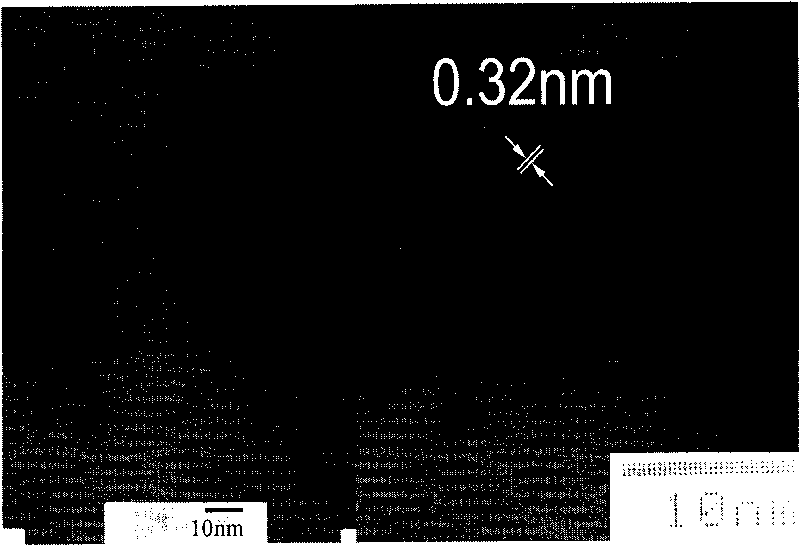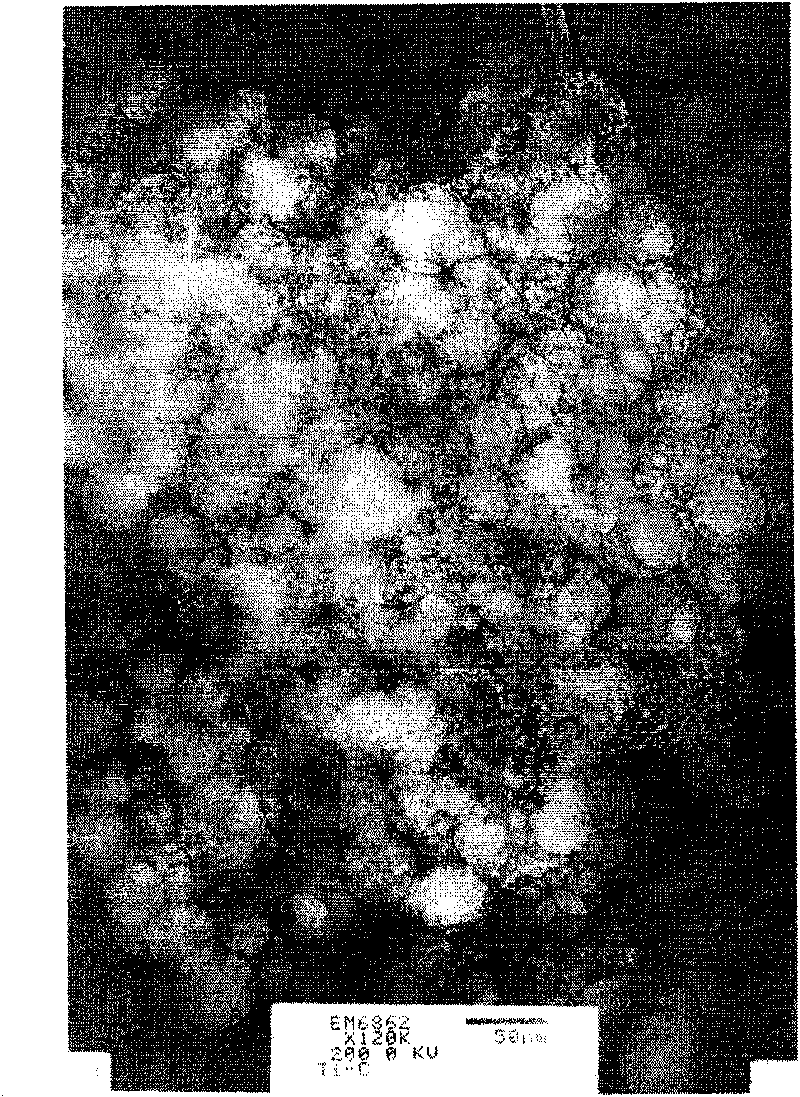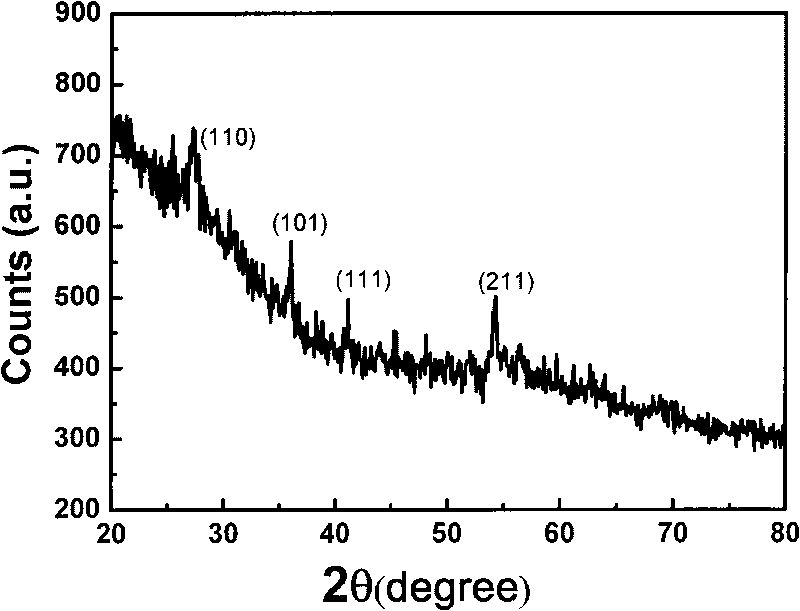Method for preparing rutile titania nanoparticles
A technology of nano-titanium dioxide and rutile phase, which is applied in the direction of titanium dioxide, titanium oxide/hydroxide, etc., can solve the problems of complicated process, environmental pollution, and difficulty in reducing production costs, and achieve simple and easy process, convenient parameter control and long growth cycle short effect
- Summary
- Abstract
- Description
- Claims
- Application Information
AI Technical Summary
Problems solved by technology
Method used
Image
Examples
Embodiment 1
[0020] The specific steps of preparation are as follows: step 1, first mix polyvinylpyrrolidone with water to obtain a polyvinylpyrrolidone solution with a concentration of 0.01M, and then place the titanium sheet in the stirred polyvinylpyrrolidone solution; wherein, the polyvinylpyrrolidone The weight average molecular weight is 2000, the water is deionized water, and the purity of the titanium sheet is 99.9%. Step 2, irradiate the titanium sheet with a laser with a wavelength of 1064nm, a power of 70mJ / pulse, a frequency of 5Hz, and a pulse width of 15ns for 40 minutes to obtain a titanium dioxide colloid; wherein the laser emitting a laser with a wavelength of 1064nm is a Nd:YAG solid-state laser, and the laser The spot diameter is 1mm. In step 3, the titanium dioxide colloid was subjected to centrifugation, washing and drying; wherein, the rotating speed of the centrifugation was 13000r / min, the washing was washed twice with deionized water, and the drying was kept at 30°...
Embodiment 2
[0022] The specific steps of preparation are: step 1, first mix polyvinylpyrrolidone with water to obtain a polyvinylpyrrolidone solution with a concentration of 0.05M, and then place the titanium sheet in the stirred polyvinylpyrrolidone solution; wherein, the polyvinylpyrrolidone The weight average molecular weight is 10000, the water is distilled water, and the purity of the titanium sheet is 99.99%. Step 2, irradiate the titanium sheet with a laser with a wavelength of 1064nm, a power of 85mJ / pulse, a frequency of 8Hz, and a pulse width of 13ns for 35 minutes to obtain a titanium dioxide colloid; wherein the laser emitting a laser with a wavelength of 1064nm is a Nd:YAG solid-state laser, and the laser The spot diameter is 1.3mm. In step 3, the titanium dioxide colloid was subjected to centrifugation, washing and drying; wherein, the rotational speed during centrifugation was 13500 r / min, the washing was three times with distilled water, and the drying treatment was heat p...
Embodiment 3
[0024]The specific steps of preparation are: step 1, first mix polyvinylpyrrolidone with water to obtain a polyvinylpyrrolidone solution with a concentration of 0.1M, and then place the titanium sheet in the stirred polyvinylpyrrolidone solution; wherein, the polyvinylpyrrolidone The weight average molecular weight is 20000, the water is deionized water, and the purity of the titanium sheet is 99.9%. Step 2, irradiate the titanium sheet with a laser with a wavelength of 1064nm, a power of 100mJ / pulse, a frequency of 10Hz, and a pulse width of 10ns for 30 minutes to obtain a titanium dioxide colloid; wherein the laser emitting a laser with a wavelength of 1064nm is a Nd:YAG solid-state laser, and the laser The spot diameter is 1.5mm. In step 3, the titanium dioxide colloid was subjected to centrifugation, washing and drying; wherein, the rotational speed during centrifugation was 14000 r / min, the washing was washed twice with absolute ethanol, and the drying treatment was kept ...
PUM
| Property | Measurement | Unit |
|---|---|---|
| Particle size | aaaaa | aaaaa |
Abstract
Description
Claims
Application Information
 Login to View More
Login to View More - R&D
- Intellectual Property
- Life Sciences
- Materials
- Tech Scout
- Unparalleled Data Quality
- Higher Quality Content
- 60% Fewer Hallucinations
Browse by: Latest US Patents, China's latest patents, Technical Efficacy Thesaurus, Application Domain, Technology Topic, Popular Technical Reports.
© 2025 PatSnap. All rights reserved.Legal|Privacy policy|Modern Slavery Act Transparency Statement|Sitemap|About US| Contact US: help@patsnap.com



